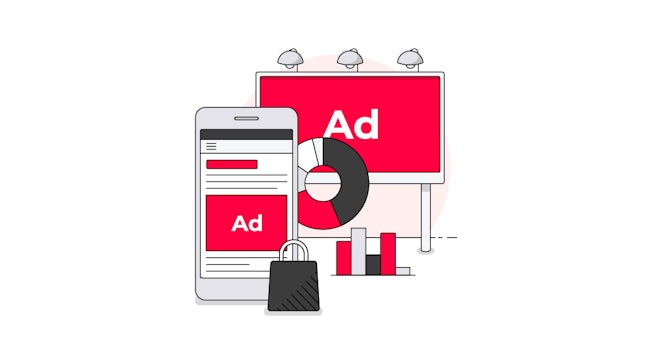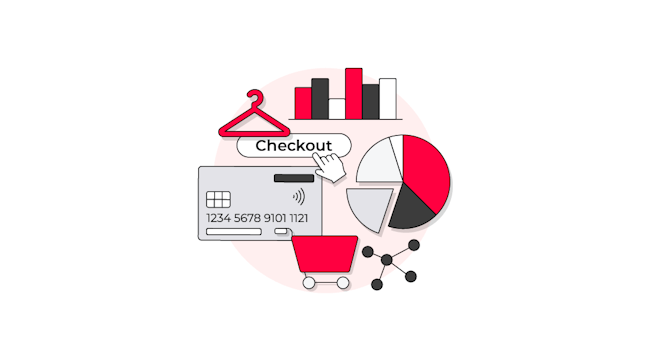Latest News
The paid social landscape: from TikTok growth to AI-powered buying
Paid social media strategies have continued to evolve in the past couple of years, reflecting a mix of technological advancements, shifting consumer behaviour, and the need to stand out in an increasingly crowded online space.
But what is impacting the market now? From the continuation of a volatile digital ad market to new platform investments – let’s take a look at the most important trends.
- Volatility in the ad market; brands adapt in the moment
- TikTok spend and influence grows
- AI solutions become a focal point, streamline activation
- Retail media tie-ups
- Platforms refine native checkout strategies
For more on social advertising…
Explore our reports, articles and case studies, or get in touch to learn more about training (including elearning, face-to-face and bespoke).
1. Volatility in the ad market lingers on, as marketers strive for greater control
Advertising spend on social media channels dropped by 13.9% in the last six months of 2022, according to the AA/Warc Expenditure Report. This was certainly reflected in the earnings of major social media platforms, with Meta and Alphabet reporting declines in the latter half of the year.
There has been some recovery in 2023, with Meta’s ad revenue contributing to a 12% overall growth in Q2, while YouTube saw its ad revenue rise 4.4% for the same quarter. In general, however, growth remains slow, with a certain amount of volatility, largely lingering from the economic downturn, the implementation of Apple’s ATT framework, as well as platform changes or upheaval, as seen at Twitter (now known as ‘X’).
Consequently, Insider Intelligence’s original forecast of $79.28 billion in paid social spend by 2024 has now been slashed by $20 billion, reflecting the protracted volatility of the market.
Warc’s director of data, intelligence and forecasting, James McDonald, also told Marketing Week in April that the decline in social media spend stems from wider financial pressures facing small businesses. “Sharp and sustained falls in social media spend – the first time this has been recorded in the UK – are likely to have been instigated by reduced advertising activity among the SMEs who comprise a ‘long tail’ of ad volume on social platforms and whose margins are under incredible stress as inflation bites,” he said.
Brands adapt in the moment
The market means that larger businesses are being careful, too. Amanda Grant, VP Global Head of Social at GroupM Nexus, told Econsultancy that brands are increasingly looking for stability, and forward planning where possible for greater control.
“From platform bugs to boycotts, social has long been an industry where brands must keep in touch with rapidly evolving platforms and consumer sentiment. Brands are now looking further ahead to prepare for these instances, so they can adapt and make decisions decisively in the moment,” she explained.
Brands increasingly want an established decision-making process where they can effectively adjust their social strategies in real time.
– Amanda Grant, VP Global Head of Social at GroupM Nexus
“For example, brands are keen to develop social charters that align with their values and inform decisioning trees, allowing them to determine if action is required on strategy, budgets, or content etc. Brands increasingly want an established decision-making process where they can effectively adjust their social strategies in real time.”

2. Brands ramp up campaigns on TikTok as the app’s influence grows
Despite the wider disruption in social advertising, TikTok has largely defied the digital ad slowdown, generating $9.9 billion in ad revenue in 2022 – a 155% increase on the previous year.
This is because, despite platforms like Facebook offering bigger reach, TikTok has lower CPM costs coupled with a high engagement rate. As a result, it appears advertisers are not only investing in the platform, but are increasing spend. Rob Jewell, chief growth officer at Power marketing agency Power Digital, told Digiday,“Advertisers that have tested TikTok generally see success in driving incremental revenue and are continuing to double down on the platform.”
Indeed, TikTok’s overall growth is predicted to continue. A Warc report suggests that TikTok ad revenue will rise 53% to reach a forecast £15.2bn in 2023. Looking at the online video advertising market, research by Omdia suggests that this category will be worth over $331bn by 2027, with TikTok predicted to take 37% of those revenues.
The success of TikTok is also having an impact on wider innovation in advertising, impacting the overall tone and style of paid social campaigns as well as formats on social media platforms.
YouTube, for example, recently added six new creation tools to Shorts, making it even more of a direct rival to TikTok, and highlighting the continued popularity of its content. These tools include ‘Collab’, a side-by-side format that mimic’s TikTok’s duet functionality; Q&A stickers to prompt direct responses from views; and live-streaming in vertical display.
3. AI solutions become a focal point for social platforms
Since the release of ChatGPT and Dall‑E 2 in 2022, generative AI has dominated discussion in tech and digital marketing, with sectors ranging from travel to pharma assessing and investing in the technology.
Social media is no exception, with several platforms also investing in AI solutions. Meta is perhaps the most significant, with CFO Susan Li stating that the company plans to spend $33 billion this year on the “ongoing build out of AI capacity to support ads, Feed and Reels, along with an increased investment in capacity for our Generative AI initiatives.” Meta has already attributed its return to growth to its investment, with Zuckerberg stating that AI-driven recommendation had boosted time on the platform by 24%.
“Our AI work is also improving monetization. Reels monetization efficiency is up over 30% on Instagram and over 40% on Facebook quarter-over-quarter. Daily revenue from Advantage+ Shopping Campaigns is up 7x in the last six months,” stated Zuckerberg.
Alongside AI-powered recommendations, Meta has added several generative AI tools to its arsenal in the past several months, including an AI video generation system and an AI sandbox to enable advertisers to create more text and video options for ads. More recently, Zuckerberg also announced other AI technologies in various stages of development, including AI chatbots for Messenger and WhatsApp, AI stickers, as well as internal-only products, such as an experimental interface for interacting with AI agents, powered by Meta’s large language model LLaMA.
Improving advertiser outcomes and streamlining activation
The development of AI-powered tools on social is positive from a marketing perspective, helping brands and platforms to create richer and more targeted experiences. However, Emma Lacey, SVP EMEA at Zefr told Econsultancy that, “while there are certainly benefits to be reaped by advertisers from AI, it’s vital that marketers get behind initiatives that drive ‘responsible’ AI innovation to ensure the development of game-changing tools is done in a safe way.”
“It’s no secret that this technology could also pose a risk to brands on social platforms. With the increasing adoption of these tools, an awareness of their potential for creating and spreading misinformation is needed. Brands must pay greater attention to what they are appearing adjacent to and ensure that their ad spend is directed towards supporting legitimate and appropriate content,” she stated.
…it’s vital that marketers get behind initiatives that drive ‘responsible’ AI innovation…
– Emma Lacey, SVP EMEA, Zefr
At the same time, however, generative AI is also being applied to improve brand safety and suitability, with AI models increasingly being trained to identify patterns of harmful content or that suggest ad fraud. Elsewhere, AI can also facilitate automated buying and can improve advertiser outcomes.
As GroupM Nexus’ Amanda Grant explained to Econsultancy, “[T]he ability to advertise effectively and efficiently in a social landscape that demands real-time reactions is imperative. AI has taken the spotlight from the metaverse this year, becoming a focal point for social platforms in particular as it facilitates streamlined activation.”
Grant cites Meta’s Advantage+ and Google’s Performance Max as examples of AI-powered buying automation that can streamline the execution of digital campaigns for marketers as they navigate the nuances of established and emerging platforms. “By automating optimisations, marketers can stay responsive to new and ongoing trends, giving them a much-needed edge in a competitive arena,” she said.

4. Retail media and social media join forces to offer advertisers a full-funnel approach
Retail media could easily be considered as a challenger to social advertising, with the likes of Target and Amazon potentially drawing ad spend away from platforms such as Meta and Google. It’s hard to ignore the stratospheric growth of retail media, which BCG predicts will reach $100bn by 2026.
However, social platforms are partnering with retailers to offer advertisers off-site targeting, and ultimately, a full-funnel approach (that engages consumers across the online journey). For example, as Yvonne Williams writes for Ad Age, “if social focuses on persona testing, but retail focuses on conquesting and consideration audiences, you can then devise a feedback loop for identifying new prospects and retargeting audiences to drive performance.”
We are already seeing partnerships that aim to do this, enabling retailers to better understand how ads drive engagement and traffic as well as conversion. For example, in March 2023, Dollar General’s retail media network, DGMN, began working with Meta to tie campaigns to in-store sales. As Dollar General explains, the partnership enables advertisers to “reach DG’s more than 90 million unique customer profiles across the Meta ecosystem via an array of placements including Facebook and Instagram News Feeds, Stories and Reels.”
Elsewhere, Walmart’s retail media network has partnered with TikTok and Snap to better measure the impact of social commerce. As part of the deal, Walmart Connect+ will enable advertisers to serve in-feed ads on TikTok, which it says will leverage “the impact of TikTok’s sound-on full screen video format together with Walmart Connect’s targeting and measurement.” Additionally, the partnership enables advertisers to purchase Snap ad units, “and get in front of the unique Snapchat audience, who hold over $1.9 trillion in spending power.”
The combined power of retail media and social media is creating a new ecosystem that is set to fuel advertising built on first-party data.
5. Social platforms refine native commerce strategies in a bid to drive ad spend
Meta shut down its Live Shopping channel on Facebook last year and TikTok has abandoned plans to expand its live ecommerce initiative in the US and Europe.
Social commerce as a whole, however, is a slightly different story. Platforms are hoping it will also help to drive advertising. In April, Meta announced that it would be expanding Shops Ads to thousands of businesses in the US, as well as phasing out the onboarding of new Shops on Facebook and Instagram if they do not have checkout enabled. Essentially, this means that Shops will no longer be allowed to direct users to a third-party ecommerce site to checkout, with Meta intent on being the sole checkout provider.

This push is designed to attract advertisers, with Meta claiming that the combination of in-app checkout with Advantage+ – its AI-powered ads product – drives better ad performance. According to the company, tests showed that campaigns using Shops ads outperformed website-only campaigns with a cost per action and return on ad spend improvement of 20% on average.
Elsewhere, TikTok has been quietly building out its commerce capabilities, beginning with the introduction of three new types of shopping ads last August – video shopping ads, catalog listing ads, and live shopping ads. Since, TikTok has also started testing in-app checkout in the US, enabling more companies to sell their products directly via the app. However, reports suggest that TikTok is struggling to attract US merchants onto TikTok Shop. In response, Bloomberg reports that TikTok is offering free listings, free shipping, and zero commissions to lure in more businesses.
Whether or not TikTok succeeds remains to be seen, but its vision is clear: by expanding its commerce footing, and ultimately encouraging users to combine social media usage and shopping, revenue (also stemming from more advertising on the platform) could follow. As in retail media, having a full understanding of what a customer goes on to buy (in a closed-loop system) is very powerful.
For more on social advertising…
Explore our reports, articles and case studies, or get in touch to learn more about training (including elearning, face-to-face and bespoke).

By Nikki Gilliland August 9th 2023